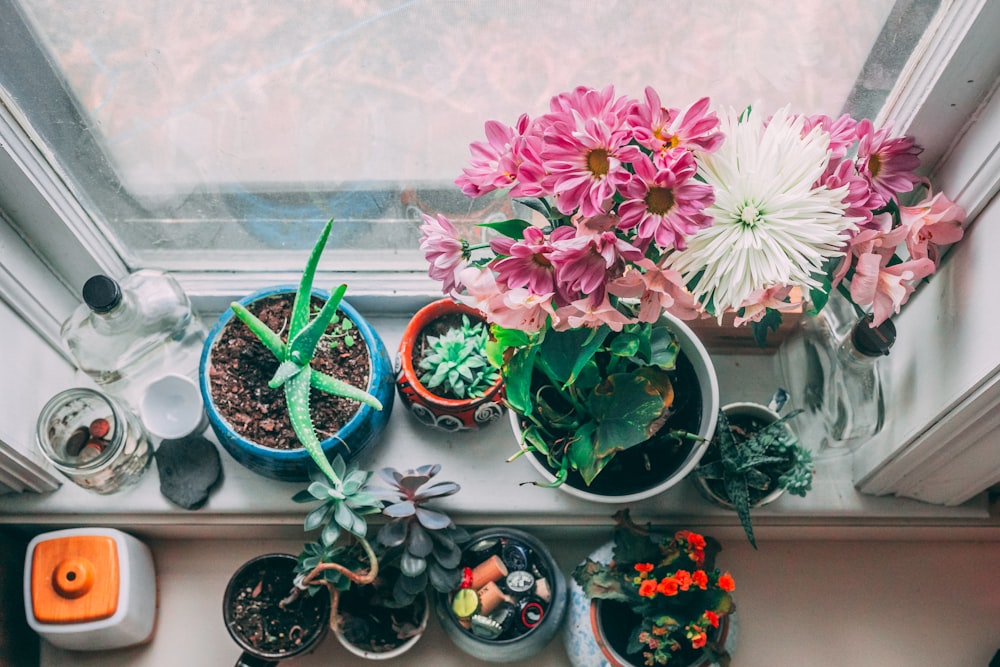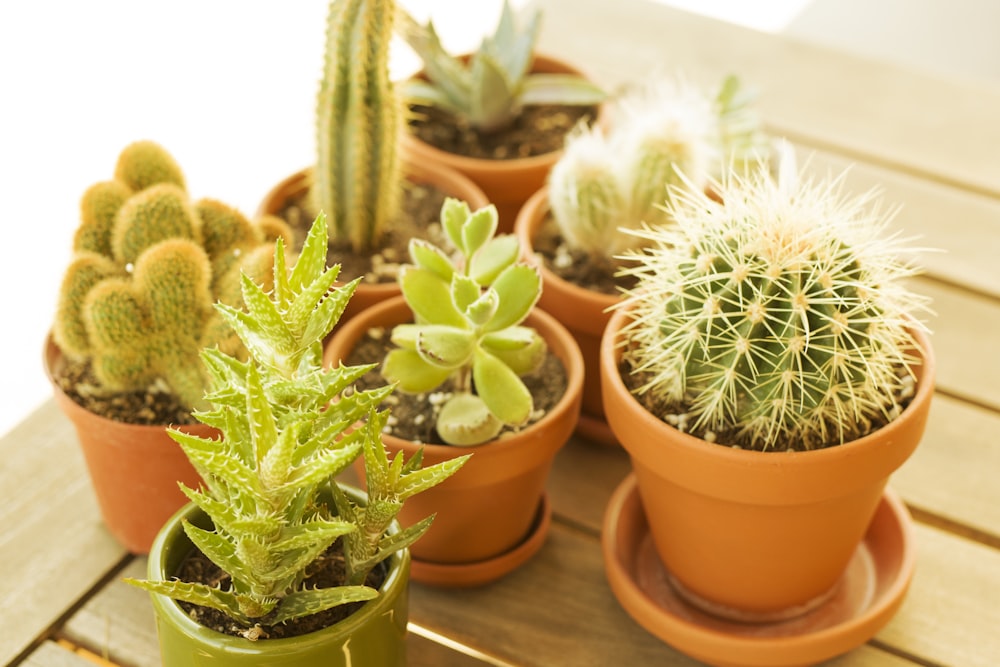Succulents make great houseplants and brighten up any space. They are great plants for a beginner, once you get the hang of their care, since they are hardy and do not require that much maintenance. With the following tips, you can learn how to take care of succulents indoors and learn how to keep succulents alive.
Succulents need to be given proper conditions to grow so that they do not end up stretched out (“etiolated“) or rotten. These are common mistakes beginners make when caring for their succulents.
It is important to remember that succulents are desert plants- as such they enjoy warm, dry climates with infrequent watering.
With the following tips, you can learn how to take care of succulents indoors and make sure your houseplants are nice and healthy. And the best part is, once you get the hang how to keep succulents alive, it’s easy!

How to keep succulents alive in 6 easy steps
1. Sunlight needs for succulents
Making sure you have enough sunlight is one of the most important factors when growing succulents. If your plant does not receive enough light, it loses it’s nice compact rosette and spread out/”etiolate” in search of more light. No one like leggy plants!
Learn more about succulent etiolation and how to fix it here
To make sure your succulent gets the light it needs, place it near a window that gets nice, bright light. The window should be able to provide at least 6 hours of bright light for your plant to grow. Ideally, you want to place your succulent in a south-facing window. Avoid dark corners that do not receive light.
While you want your plant to receive plenty of light, make sure that the leaves are not directly touching the window surface – this can burn the leaves and damage them.
If you find that your succulents are not getting enough light despite being in front of a window, or you want to keep them somewhere in your house that does not receive light, consider getting a grow lamp. This way, you can be sure your plant is getting the light it needs wherever you decide to keep it.
I use a grow lamp indoors and it works great! My succulents remain their brightly colored red/purple/orange shades and stay in a compact shape.

2. Water needs for succulents
Watering succulents can be tricky, so I have an entire post dedicated to it. Overwatering a succulent can lead to rot and is one of the most common mistakes people make. To make matters worse, both under and overwatering can lead to wrinkled leaves, making it difficult to decide what exactly your plant needs.
It is important to remember succulents do not need as much water as normal houseplants.
In general, succulents should be watered once a week in the summer. During the winter, they should be watered every three to four weeks. Most succulents become dormant during the winter and should be watered less frequently to avoid root rot. However, some succulents display opposite growing patterns and dormant during the summer and grow during winter. Therefore, it is important to know what type of growing pattern your succulent exhibits so you can water appropriately.
Succulents should be watered when the soil is completely dry. They should be soaked enough that you see water begin to seep out of the drainage hole. You want to ensure that water does not sit in the rosette because if left for too long, it could lead to rot as well. I like using a squeeze bottle while watering so I can ensure the water goes in the soil and does not sit on the leaves.
Do not water your succulents every day, because it can kill them.
3. Keep a warm temperature
Since succulents are native to the desert, it is natural that they enjoy warm, dry temperatures. Succulents like temperatures of about 70 to 80 °F (21 to 27 °C) in the summer and around 60 °F (15.5 °C) in winter months. Do not leave succulents outside in temperatures colder than that (unless you know they are cold hardy) because they could die.
Avoid keeping succulents in rooms that can get humid (such as bathrooms) as that can lead to rot.

4. Best soils and pots for succulents
The best types of pots for succulents are plain terracotta pots with drainage holes. These work best because they do not retain extra water – succulents hate staying wet for too long. These pots help the succulent’s soil dry out faster and are much more forgiving if you water your succulent too much.
I recommend staying away from glass containers, or planting succulents in terrariums when starting out because these can retain moisture for a long time, which your succulent does not like. Once you have a better idea of a good watering schedule that works for your succulents, you can try these out, but in the beginning, terracotta work great!
It is important for succulents to be planted in a well draining, porous soil that does not retain water. Typical gardening soil for houseplants usually retains too much moisture for succulents and should not be used. I use a 70:30 ratio of succulent soil to perlite and find that that works best.
5. Fertilizing your succulents
Succulents usually need very little fertilizer. I tend to water with a succulent fertilizer once every 1 to 2 months during their growing periods and find this is enough to keep them healthy.
You do not need to fertilize during their dormant months.
6. Avoid pest infestations to keep succulents alive
Dreaded mealy bugs can come out of seemingly no where and destroy your plants shape and integrity. If you are following the above conditions and have good watering and airflow, you can greatly minimize your risk of mealy bugs appearing. However, if those nasty critters still pop up (maybe from a new plant you just bought), they can spread fast and become a huge headache.
When you see mealy bugs (they are tiny, white and fuzzy), check your all of your other plants for signs of the pest because mealy bugs spread quickly, and other plants may be infected as well. Pay special attention to the nooks and crannies of your plants- mealy bugs love those areas. Quarantine any infected plants to contain the infestation.
For the plants with signs of pests, take a q-tip, soak it in rubbing alcohol and dab it at any bugs you see. This kills them instantly. Also water the soil with rubbing alcohol to kill any eggs they may have left behind. This does not harm your plant and helps get rid of any eggs in the soil. Repeat this every other day for several days because mealy bugs are quite pesky and take a while to get rid of.
The most important part of learning how to take care of succulents: have fun!
Do not get discouraged if your first few tries at growing succulents and learning how to keep succulents alive are unsuccessful. Remember, growing succulents is supposed to be calming and fun!
These are my tips on how to take care of succulents indoors and how to fix common mistakes beginners make when growing succulents.
By following these tips, you can get a better idea of how to take care of succulents and maintain happy and healthy plants.
Have any succulent tips you’d like to share? Or any questions I didn’t answer? Let me know down below!


Learn more about the specifics on how to keep succulents alive by checking out these articles:
Succulent Etiolation: What to do if your Succulent is Growing Tall








